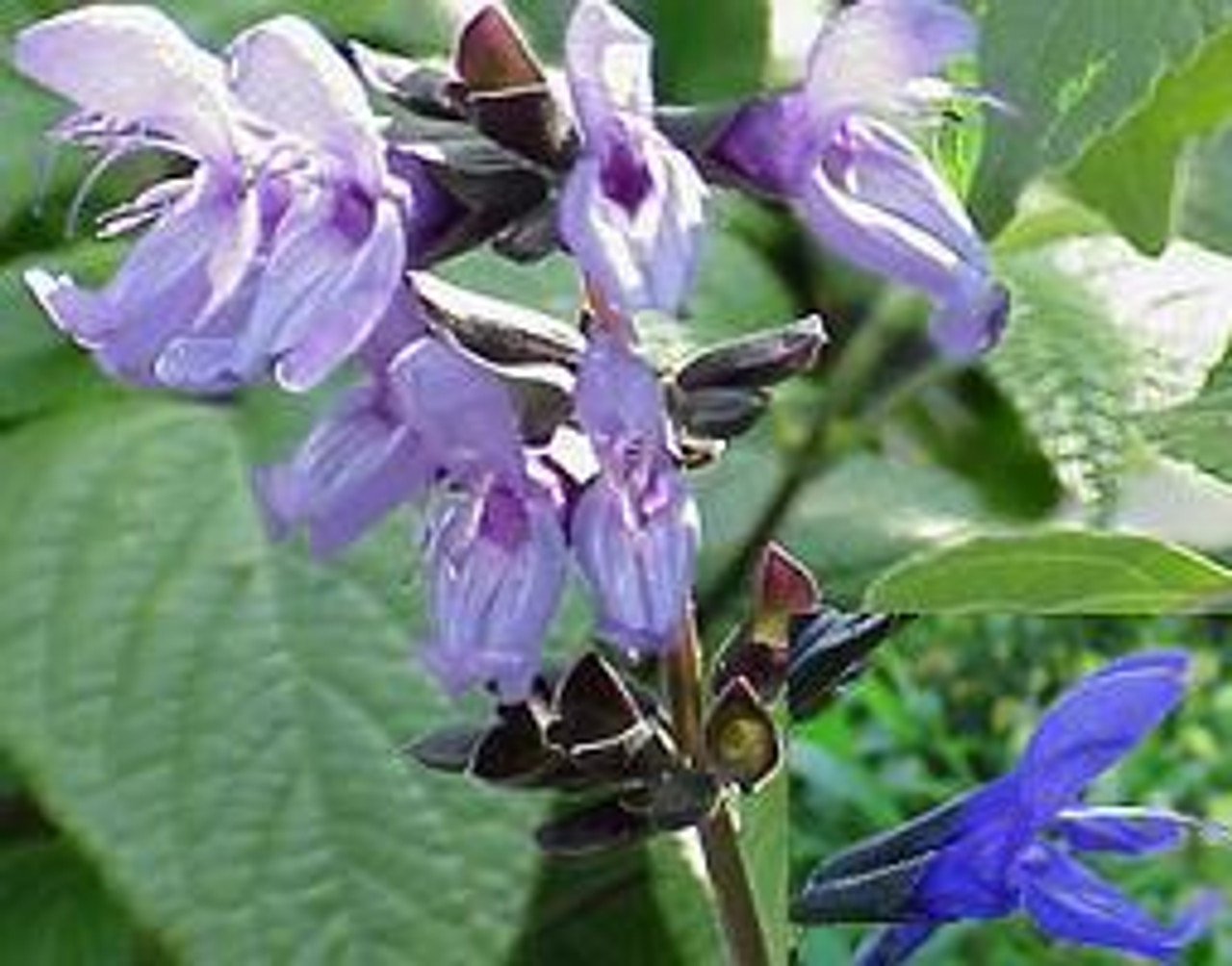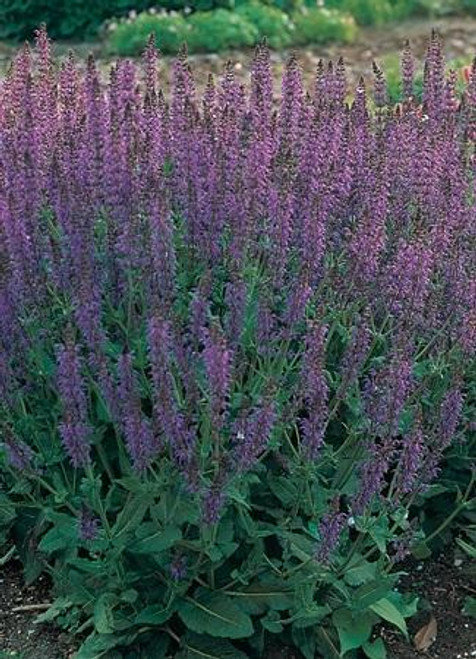Product Description
Salvia guaranitica 'Black and Blue' (4) 1-gallons
Common Names: blue anise sage, Brazilian sage, anise sage, anise scented sage
Family: Lamiaceae/Labiatae (mint Family).
Zone: (6) 8 to 10.
Full sun.
Mature size: up to 18 inches height; spreads 24 inches.
Herbaceous perennial subshrub.
Cobalt-blue flower held in dark purple calyces (the part of the flower that encloses the base of the petals) along the tall flower spikes above the lush green foliage, blooms summer through fall. Bushy, somewhat open habit with upright, branching, square, dark green stems, 'Black; Blue' is a favorite of hummingbirds and gardeners alike. When bruised, the foliage has a very mild aroma.
Salvia guaranitica 'Black and Blue' is a showstopper! It is a hummingbird magnet with an exotic flair that is sure to turn heads in your garden. Here is what you need to know:
Key Features:
- Dramatic Blooms: The name says it all! This salvia boasts stunning, deep cobalt blue flowers that emerge from jet-black calyces. The long, tubular flowers bloom from mid-summer to fall, creating a captivating display.
- Attractive Foliage: The fragrant, bright green leaves provide a lovely contrast to the vibrant blooms and release a pleasant anise scent when crushed.
- Upright Habit: This salvia grows in a vigorous, upright clump, typically reaching 3-5 feet tall and wide. It adds a wonderful vertical element to garden beds and borders.
- Pollinator-Friendly: Hummingbirds, butterflies, and bees adore the nectar-rich flowers, making it a valuable addition to any wildlife garden.
Growing Tips:
- Sunlight: Plant in full sun (at least 6 hours per day) for the best flowering. It can tolerate some light shade, but too much shade may cause it to become leggy and produce fewer blooms.
- Soil: Prefers fertile, well-drained soil. Amend heavy clay soil with compost or other organic matter to improve drainage.
- Water: Water regularly, especially during hot, dry periods. Once established, it can tolerate some drought, but consistent moisture will encourage more robust growth and flowering.
- Hardiness: 'Black and Blue' salvia is hardy in USDA zones 7-10. In colder climates, it's often grown as an annual or overwintered indoors.
- Maintenance: Deadhead spent flowers to promote continuous blooming. Cut back the plant in late winter or early spring to encourage fresh growth.
Design Ideas:
- Tropical Flair: Combine with cannas, bananas, and other bold foliage plants for a lush, tropical look.
- Back of the Border: Its tall stature makes it ideal for the back of borders, where it can provide a dramatic backdrop for shorter plants.
- Containers: 'Black and Blue' salvia also thrives in containers, adding a pop of color to patios and decks.
- Pollinator Gardens: Plant it alongside other hummingbird and butterfly favorites like agastache, monarda, and buddleia.
(4) 1-gallon containers ready to plant, plants may be trimmed for shipping,
Other Details
The most important part of the plant is its root system. Healthy roots are the foundation of a healthy, vibrant plant. The type of plug container used is based on the specific needs of the plants. Perennials offered as bare root traditionally perform better when planted as bare root.Planted in a specialized mix, potted plants have well established root systems. Top growth stage will vary depending on the current life cycle and time of year when shipped. In Winter and early Spring dormant plants may be shipped. Dormant plants may be planted right away, even before the last frost date.
Most bare root varieties are field grown for at least one season, though Hemerocallis and Hosta are grown for two seasons. The bulk of the soil is removed during the harvesting process and the tops of most varieties are trimmed back to the crown. They are graded, packed in shredded aspen or sphagnum moss and stored in freezers until ready to be shipped.
See our Container Sizes and Bare Root Perennials pages for more information.
Plant information and care is provided in the Overview section, Plant Genus Page and general information is provided in the Planting Care & Guides. Additional questions can be asked on each Plant page.
Plant Spacing: Using the maximum mature spread or width of a plant to guide spacing, ensures space to grow to full size. To fill an area sooner, plant them closer together. Just remember, future thinning or transplanting may be needed.
Water: Keep a close eye on newly planted perennials, especially throughout the first growing year. Most early plant loss is due to too much or too little water!














